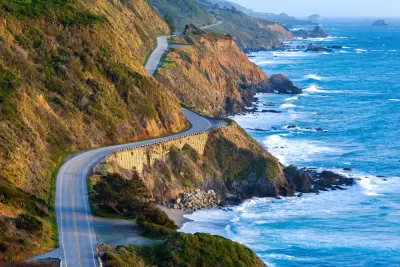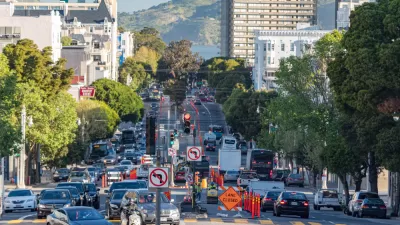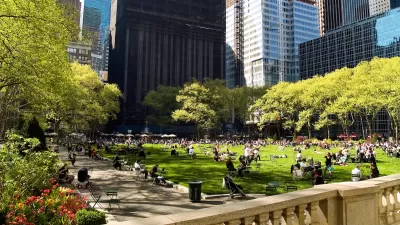At long last, California law will consider the amount of driving, rather than vehicle delay, when evaluating the environmental impacts of new developments. This is a more common-sense approximation of their environmental impacts.

"Starting Wednesday, at long last, vehicle delay will no longer be considered an impact to the environment under California environmental law. Instead, the amount of driving – rather than the smooth flow of driving – must be measured. This is a more common-sense approximation of the environmental damage from vehicle trips serving new development than mere delay to drivers, but the old way was so entrenched that it has taken years to get to this point," reports Melanie Curry.
"When S.B. 743 finally goes into effect, long commutes and suburban housing will not suddenly cease to exist. What will happen is that, under California environmental law, the amount of driving that new projects produce will have to be estimated, and if it is excessive, it will have to somehow be mitigated. Shenanigans to sidestep CEQA won’t stop, but the focus will shift from the current practice of mitigating congestion by building wider, faster roads – thus encouraging more driving and indeed ensuring it is the only viable way to get around – to finding ways to encourage more sustainable and healthy and less environmentally harmful travel – such as walking, biking, and, yes, transit."
"The new rules will make it easier to build housing near transit and jobs, where fewer car trips would be generated, because trying to mitigate for congestion – via wider roads and intersections – is much more difficult and expensive in built-up areas, and that burden will be removed. This can also make investments in sustainable and innovative transportation solutions, like ride sharing and micromobility, much easier for local and regional agencies. Those investments, in turn, can increase accessibility for residents who do not own cars."
FULL STORY: New Rule on Environmental Impacts of Driving, Long Awaited, Goes Into Effect on Wednesday

Study: Maui’s Plan to Convert Vacation Rentals to Long-Term Housing Could Cause Nearly $1 Billion Economic Loss
The plan would reduce visitor accommodation by 25,% resulting in 1,900 jobs lost.

North Texas Transit Leaders Tout Benefits of TOD for Growing Region
At a summit focused on transit-oriented development, policymakers discussed how North Texas’ expanded light rail system can serve as a tool for economic growth.

Why Should We Subsidize Public Transportation?
Many public transit agencies face financial stress due to rising costs, declining fare revenue, and declining subsidies. Transit advocates must provide a strong business case for increasing public transit funding.

How to Make US Trains Faster
Changes to boarding platforms and a switch to electric trains could improve U.S. passenger rail service without the added cost of high-speed rail.

Columbia’s Revitalized ‘Loop’ Is a Hub for Local Entrepreneurs
A focus on small businesses is helping a commercial corridor in Columbia, Missouri thrive.

Invasive Insect Threatens Minnesota’s Ash Forests
The Emerald Ash Borer is a rapidly spreading invasive pest threatening Minnesota’s ash trees, and homeowners are encouraged to plant diverse replacement species, avoid moving ash firewood, and monitor for signs of infestation.
Urban Design for Planners 1: Software Tools
This six-course series explores essential urban design concepts using open source software and equips planners with the tools they need to participate fully in the urban design process.
Planning for Universal Design
Learn the tools for implementing Universal Design in planning regulations.
Ascent Environmental
Borough of Carlisle
Institute for Housing and Urban Development Studies (IHS)
City of Grandview
Harvard GSD Executive Education
Toledo-Lucas County Plan Commissions
Salt Lake City
NYU Wagner Graduate School of Public Service





























